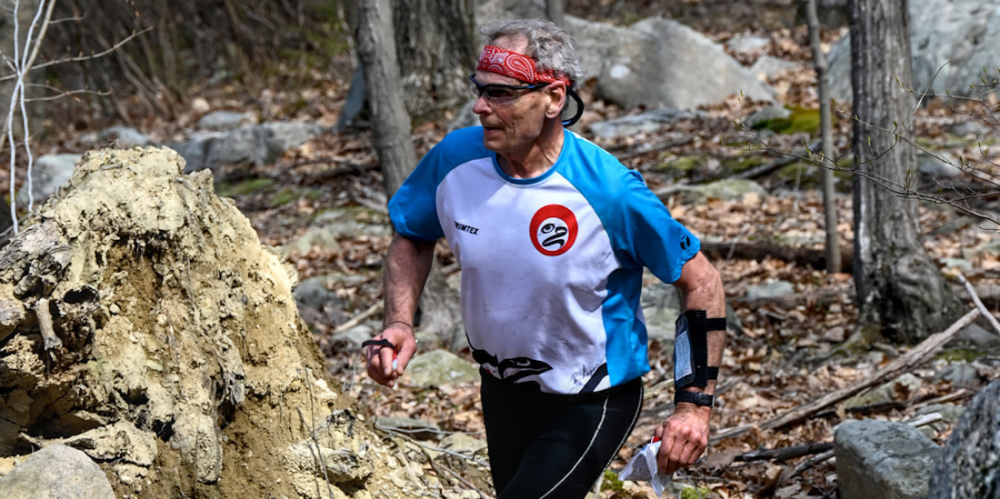

New York City’s Hidden Adventure Sport Thrives In Urban Wilderness
New York, N.Y. – The familiar weight of a compass in one hand and a detailed map in the other brought back memories of college competition days. But this wasn’t Sweden‘s dense forests—this was Roosevelt Island, and the joggers passing by with their navigation tools weren’t lost tourists. They were orienteers, practitioners of one of New York City‘s most engaging yet under-the-radar adventure sports.
A Sport Born in Scandinavian Wilderness
Orienteering originated in late 19th-century Sweden as military training, evolving into a competitive sport that combines cross-country running with precise navigation. Participants use only a detailed topographic map and compass to find designated control points in the fastest time possible. The sport demands both physical endurance and mental acuity—runners must constantly make split-second decisions about route selection while maintaining pace through varied terrain.
Coming in third place in state competition during college meant mastering this delicate balance between speed and strategy. Every race was a chess match played at running pace, where the smartest route often trumped the fastest runner. That experience created an instant recognition when those Roosevelt Island joggers appeared with their familiar tools of the trade.

NYC Parks Embrace the Navigation Challenge
New York City has quietly become a significant hub for orienteering enthusiasts. The sport has found its urban footing through dedicated courses established in the city’s extensive park system. Alley Pond Park in Queens hosts a permanent orienteering course, featuring control points scattered throughout its 655 acres of varied terrain. The park’s mix of wetlands, forests, and meadows provides the diverse landscape that makes orienteering both challenging and rewarding.
The NYC Parks Department has embraced orienteering as part of its broader mission to connect New Yorkers with outdoor recreation. Regular events draw participants from across the metropolitan area, creating a community around this unique sport. These aren’t just casual weekend activities—serious competitors use NYC courses to train for national and international competitions.
Urban Orienteering Creates Unique Challenges
City-based orienteering presents obstacles unknown in traditional forest settings. Urban orienteers must navigate around buildings, account for changing park layouts, and adapt to the constant presence of other park users.
Roosevelt Island, with its waterfront paths and internal green spaces,
offers an ideal microcosm of these urban navigation challenges.
The island’s compact size and varied terrain make it perfect for orienteering training. Practitioners can work on precision navigation in a controlled environment while still experiencing the decision-making pressure that defines the sport. The presence of regular foot traffic adds an additional layer of complexity, requiring orienteers to maintain their bearing while navigating around dog walkers, cyclists, and other joggers.
Building Community Through Navigation
What struck most about witnessing those Roosevelt Island orienteers wasn’t just the nostalgia—it was the realization that this community exists throughout New York City. Orienteering USA maintains an active presence in the region, organizing regular events and supporting local clubs. The New York Athletic Club has historically supported orienteering activities, providing institutional backing for the sport’s development in the metropolitan area.
These organizations create pathways for newcomers to learn proper technique while providing competitive opportunities for experienced navigators. The sport’s inclusive nature means participants range from families looking for weekend adventure to serious athletes training for national championships. Age becomes irrelevant when success depends more on smart navigation than pure speed.

The Mental Game of Urban Adventure
Modern orienteering in New York City offers something increasingly rare in urban life—the opportunity to be genuinely lost and found within familiar surroundings.
Even longtime city residents discover new corners of parks they thought they knew completely. The sport forces participants to engage with their environment at a deeper level, reading terrain features and understanding topography in ways that casual recreation never demands.
This mental engagement explains orienteering’s growing appeal among professionals seeking active stress relief.
The sport demands complete focus on immediate navigation challenges, creating a form of moving meditation that leaves little room for daily worries. Success requires being fully present in the moment—a valuable skill that transfers well beyond park boundaries.
Finding Your Way Forward
That chance encounter on Roosevelt Island revealed more than just the presence of orienteering in New York City—it demonstrated how meaningful activities find ways to thrive even in unexpected environments.
The sport that began in Swedish forests has adapted to urban parks, creating new communities and challenges while maintaining its essential character.
For anyone curious about testing their navigation skills, New York City’s orienteering community welcomes newcomers with training programs and beginner-friendly events. The only requirements are curiosity and a willingness to occasionally take the longer route to find the faster way home.
Audio Summary (75 words): Former college orienteering competitor discovers the Swedish navigation sport thriving in New York City after spotting joggers with maps and compasses on Roosevelt Island. The sport combines running with precise navigation using only map and compass to find control points. NYC Parks Department maintains courses like the permanent setup at Alley Pond Park in Queens. Urban orienteering creates unique challenges while building community among participants seeking adventure and mental engagement in city parks throughout the metropolitan area.